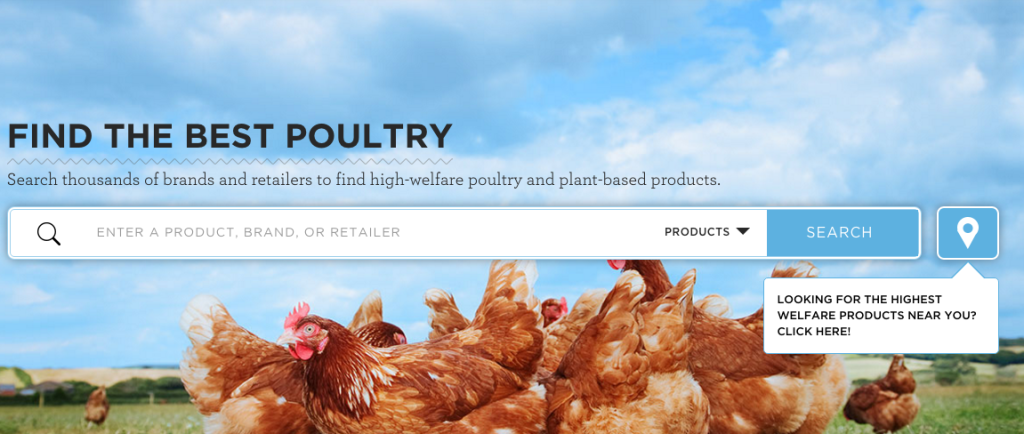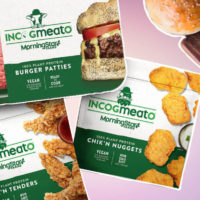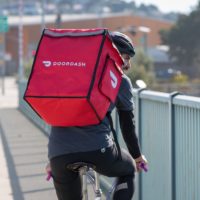Tis the season to be eating poultry. But if you’re conscious about how your food was raised, navigating the sea of labels and claims like “natural”, “free-range” and “cage-free” can make your head spin. BuyingPoultry is bringing transparency to the process and helping eaters make informed choices.
Created by farm advocacy group Farm Forward with funding from the ASPCA, BuyingPoultry is an online buying guide that educates eaters and helps them find the highest-welfare poultry products. Using data from the government, producers, animal welfare organizations, retailers and more, BuyingPoultry offers ratings for 3,000+ products from 10,000+ retailers nation-wide. “Using BuyingPoultry is like taking a team of experts to the grocery store to help you pick products that match your values,” says Farm Forward’s director of special programs Andrew deCoriolis. Since soft launching in mid-November, the site has had 15,000 visitors and aims to get to 250,000 by its one year mark.
BuyingPoultry is focused on eaters now, but by demonstrating demand for better poultry, the platform aims to affect positive change throughout the supply chain, from farmers to retailers and foodservice institutions. “When retailers learn that there are hundreds of thousands of people using BuyingPoultry to search for grocery stores that carry higher-welfare and plant-based products, we think that they will be motivated to offer (more of) them,” deCoriolis says. We chatted via email about the impact BuyingPoultry hopes to have, lessons learned from launching the platform and what’s next. Our interview has been edited for clarity.
FTC: Can you tell me more about where your data come from and how do you guarantee accuracy?
AD: The BuyingPoultry database was created by aggregating product and retailer information from dozens of sources. We collected information from government data, producer websites, lists of farms certified by animal welfare organizations, retailer websites, online retailers like Instacart, etc. BuyingPoultry rates products by evaluating the third-party welfare certifications (like Certified Humane, GAP, AWA) and claims (like “free range”) that each product carries. We do as much as we can to verify that we have accurate information about the certifications and claims carried by each product. We monitor information provided by welfare certifications on an ongoing basis, and in some cases reach out to producers to verify additional information.
FTC: Can you walk me through what it looks like for a customer to use BuyingPoultry?
AD: BuyingPoultry encourages visitors to find higher-welfare products one of two ways: people can either for a specific product (chicken breast), brand (Egglands Best), or retailer (Safeway), or can simply search for the highest-welfare products available nearby. For those seeking basic guidance, we make simplified product recommendations by classifying each tier of products as either Avoid, Better, or Best. For those seeking a more precise assessment of animal welfare, we provide expert animal welfare assessments of each tier in the form of an easy-to-understand A through F letter grade. BuyingPoultry also offers resources for people to learn about common labels, heritage poultry, antibiotics, and the importance of welfare certifications.
FTC: What impact do you hope BuyingPoultry will have over this holiday season and going forward?
AD: Since the launch, we’ve heard from people all over the country who have used BuyingPoultry to find higher-welfare turkey and chicken products for their holiday meals. Many visited our page of online retailers to look for “Best Choices” that could be delivered right to their doors. We expect BuyingPoultry will have all kinds of impacts over time. The site is already helping consumers evaluate products in the stores they typically shop and find stores that carry higher-welfare options.
Beyond consumers, BuyingPoultry is going to help create demand for products that carry a third-party welfare certification. As demand for these products increases, we will work with higher-welfare poultry farmers to grow and expand their operations to meet demand. We are already seeing situations and communities where demand for certified higher-welfare products outstrips supply. Lastly, we think BuyingPoultry will help motivate retailers to carry higher-welfare poultry products and plant-based alternatives. When retailers learn that there are hundreds of thousands of people using BuyingPoultry to search for grocery stores that carry higher-welfare and plant-based products, we think that they will be motivated to offer (more of) them.
FTC: How are you marketing BuyingPoultry to “conscious consumers,” people who care about where their food comes from and how it was produced?
AD: We are marketing BuyingPoultry through the traditional media, by reaching out to bloggers interested in food and health, through social media, and with digital ads targeting people who we think will be excited about the site. We expect a lot of traffic will come through organic search. As you note, there are a lot of people who want to know about where their food comes. Because BuyingPoultry provides such authoritative and comprehensive information we expect it to become the go-to source for many consumers. Over time we may also experiment with some grassroots marketing efforts, like having volunteers reach out to shoppers outside stores that carry higher-welfare products.
FTC: What have been your major lessons learned from building and launching BuyingPoultry so far?
AD: One less we learned launching the site is that some of the most important welfare issues in the poultry industry are unknown to consumers. For example, many people who use BuyingPoultry are learning about the welfare implications of genetics for the first time. Most consumers didn’t know that the vast majority of chickens and turkeys suffer due to rapid growth, and that hens suffer as a result of increased egg production. These concepts are totally new to most consumers. Most consumers (and even I when I started this project) imagine that all you have to do to achieve high welfare is put birds outside on grass. It’s a reality check to learn that the welfare of the modern poultry industry is compromised by the genetics of the animals themselves.
Another lesson we learned is that consumers aren’t the only ones struggling to make sense of poultry labels. We’ve heard from institutional buyers, foodservice providers, restaurants, and even retailers who have been searching for the information that BuyingPoultry offers. Institutional buyers, like consumers, are often confused by the different certifications and claims and struggle to find products that align with their institutional values. Many institutions have adopted animal welfare guidelines as part of their purchasing policies but their buyers still struggle to identify products that line up. BuyingPoultry has already been used by several institutional buyers to find higher-welfare poultry suppliers and we expect the site to evolve to be an integral tool for food service providers of all types going forward.






